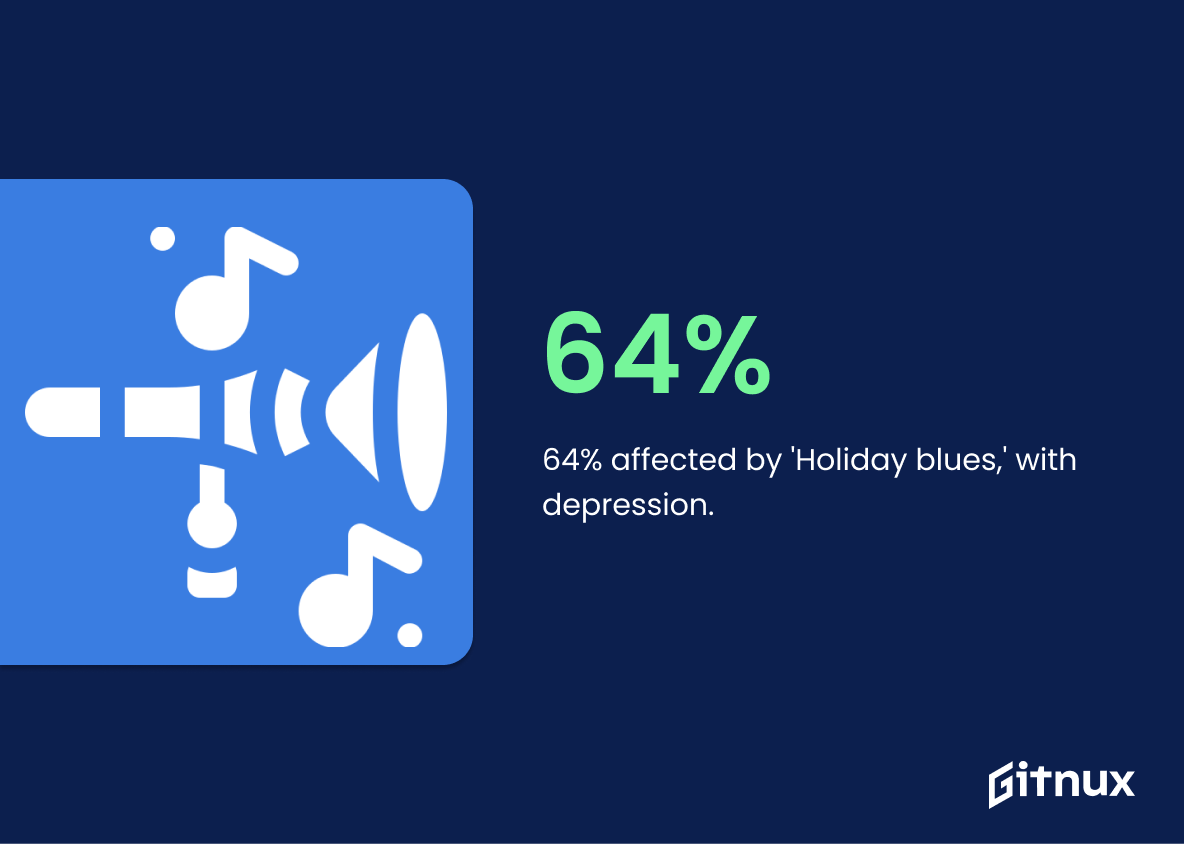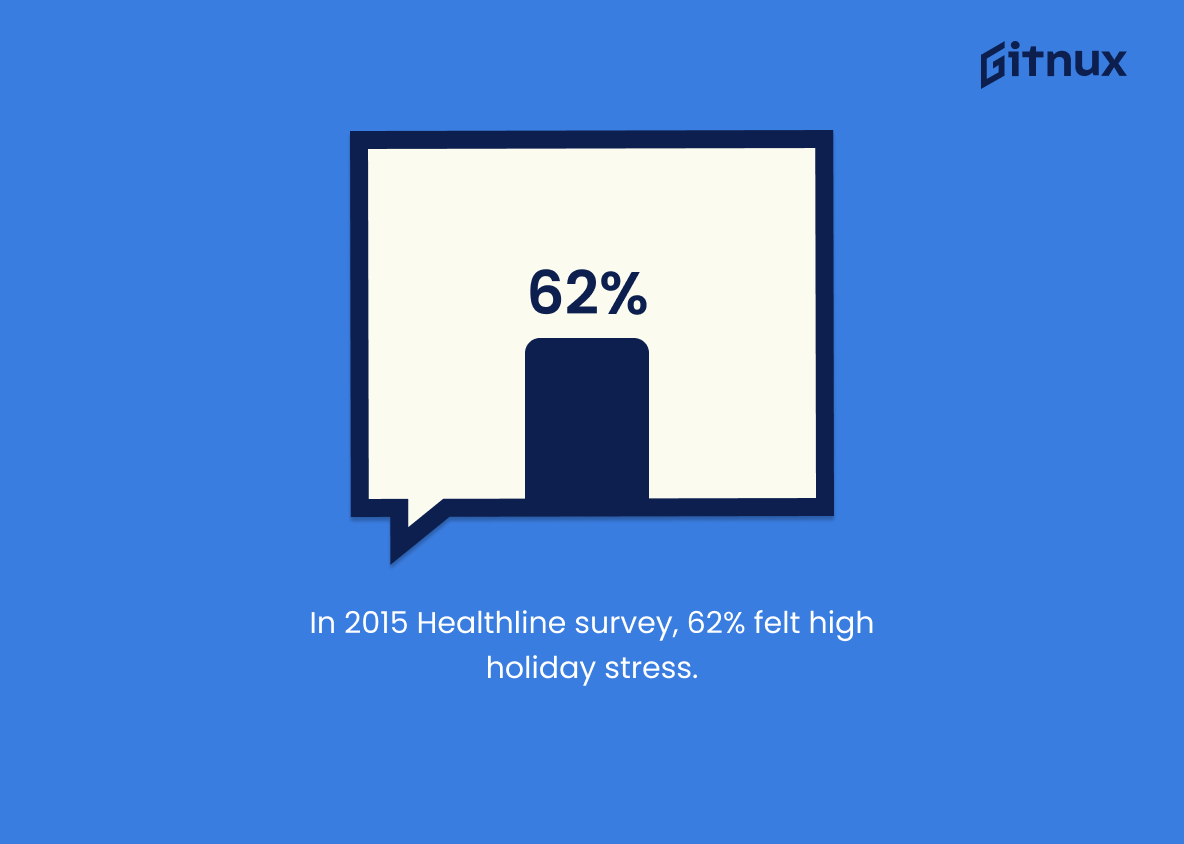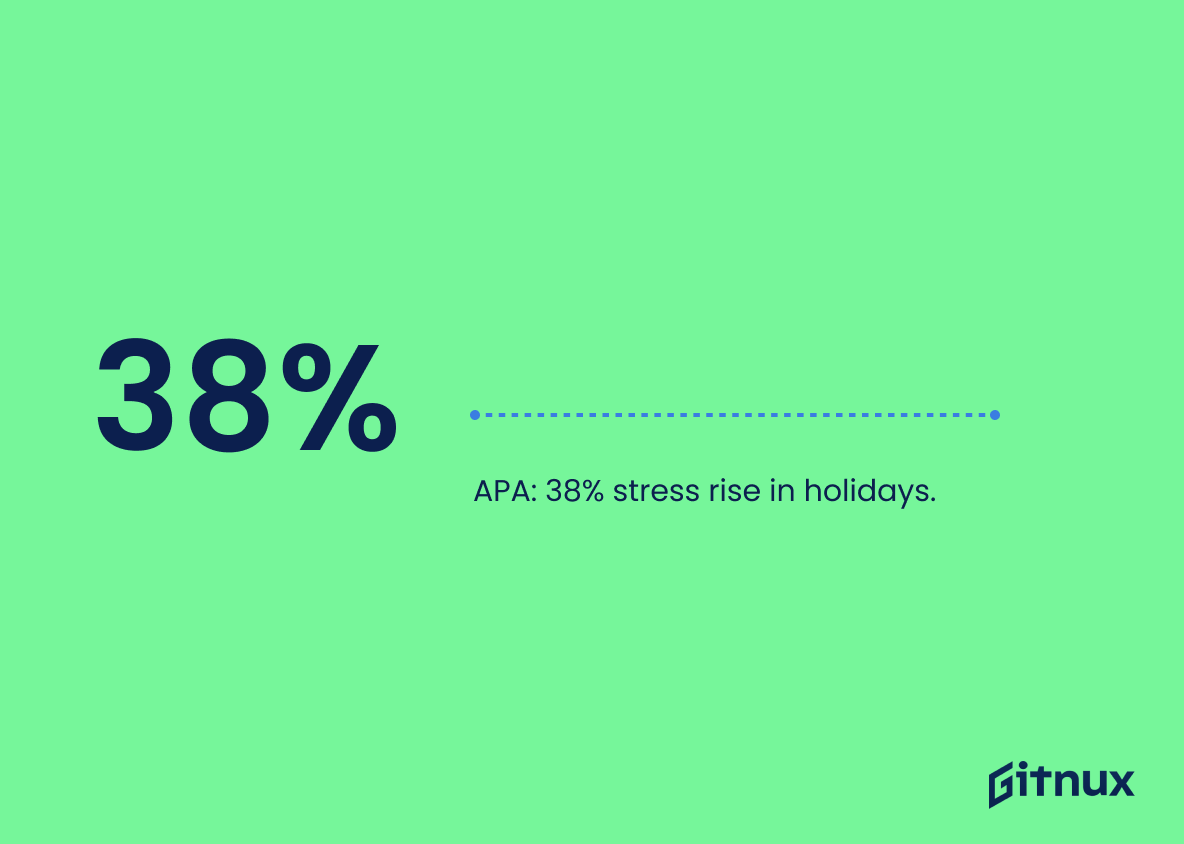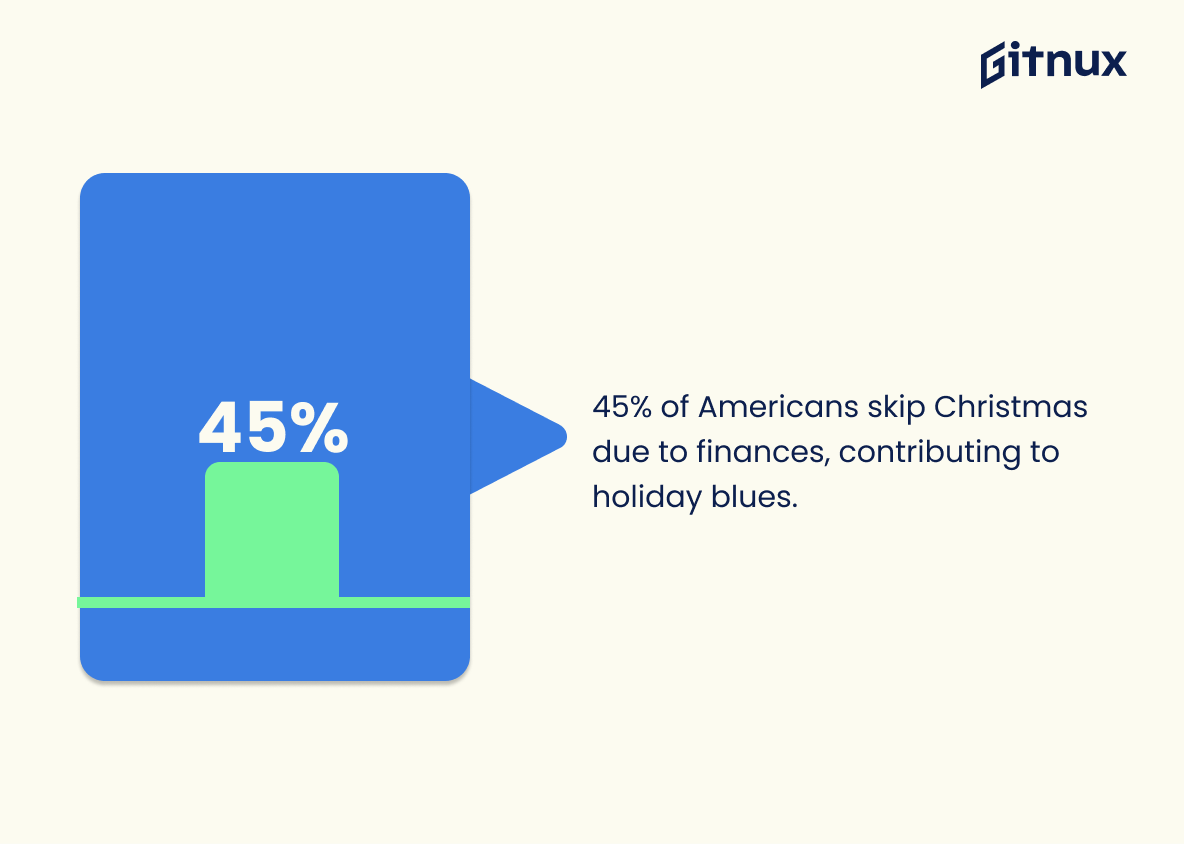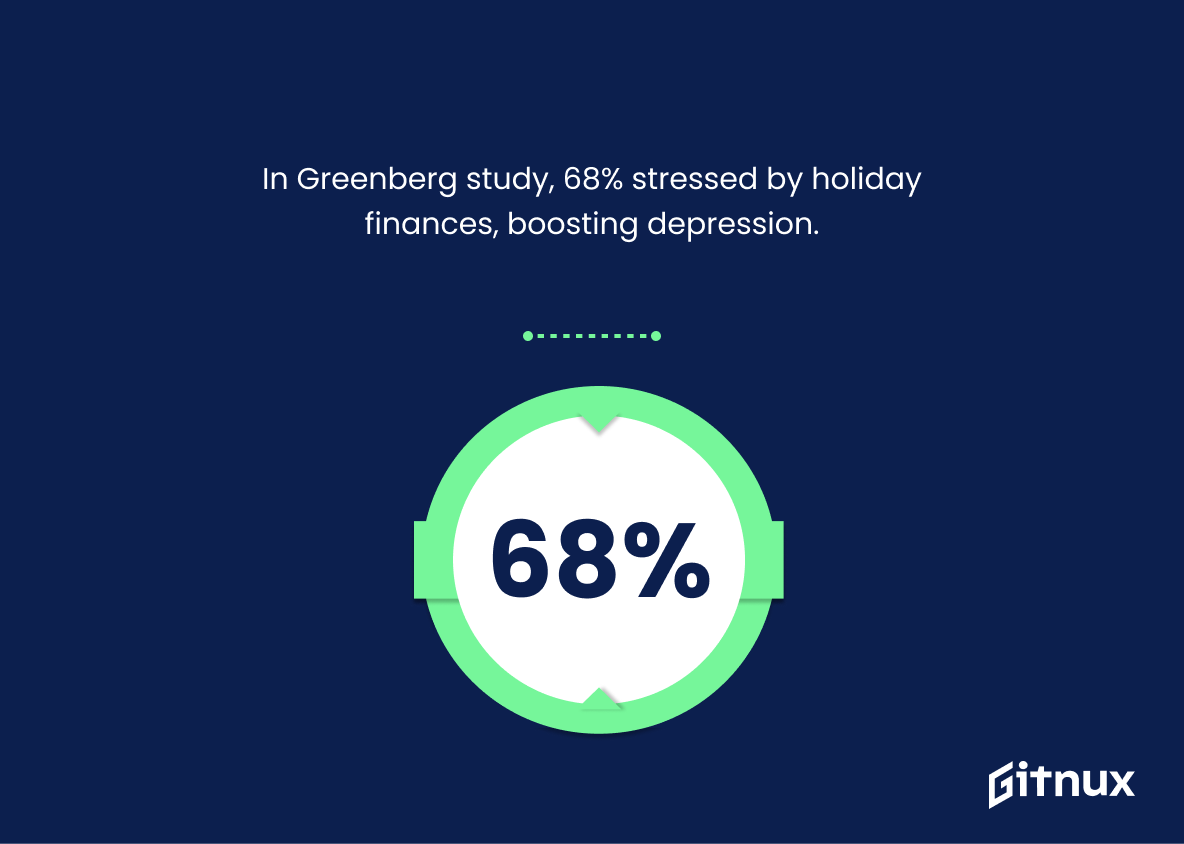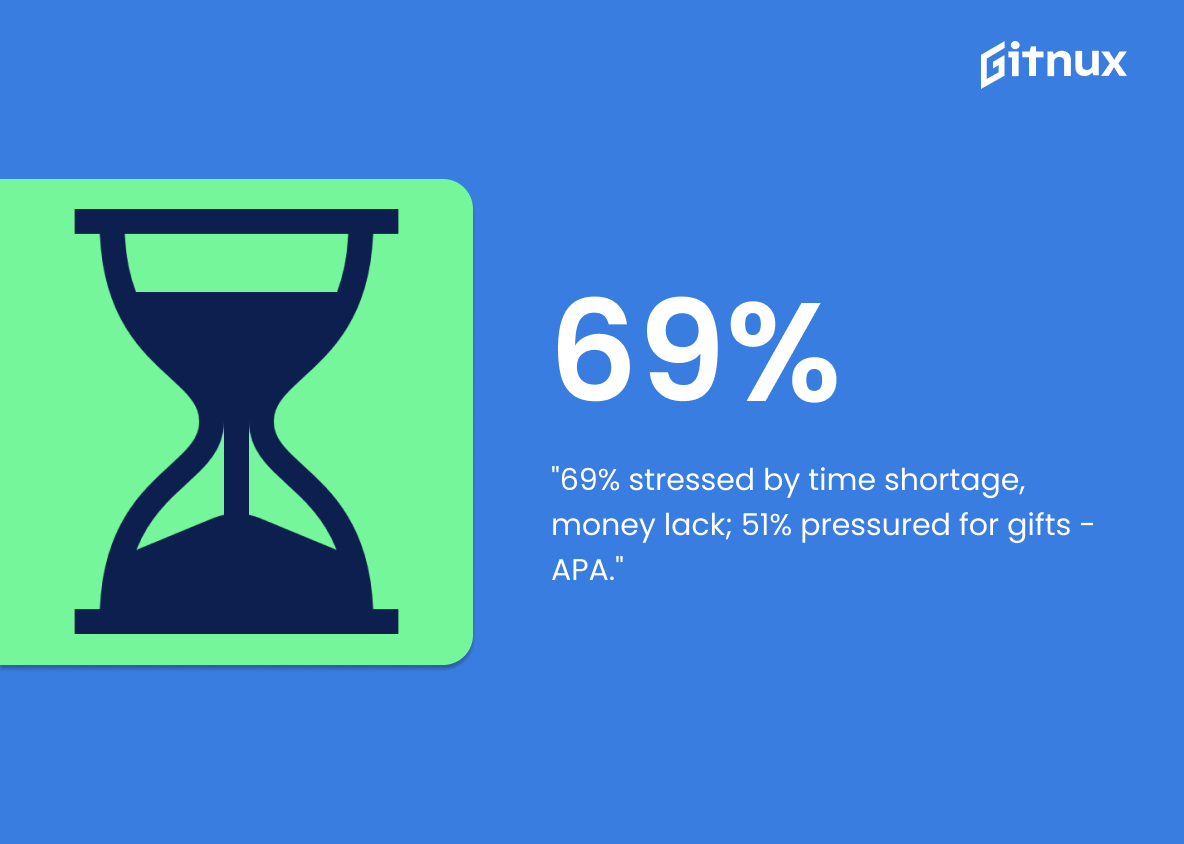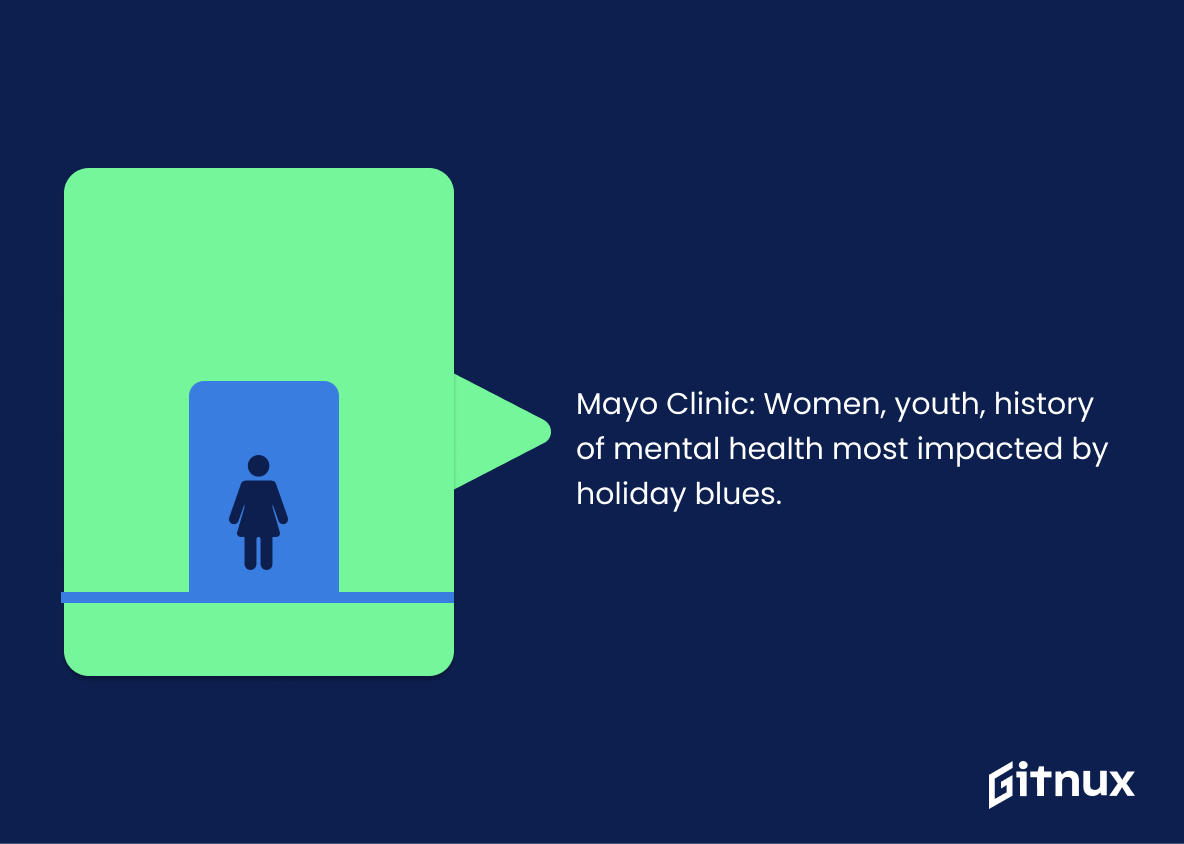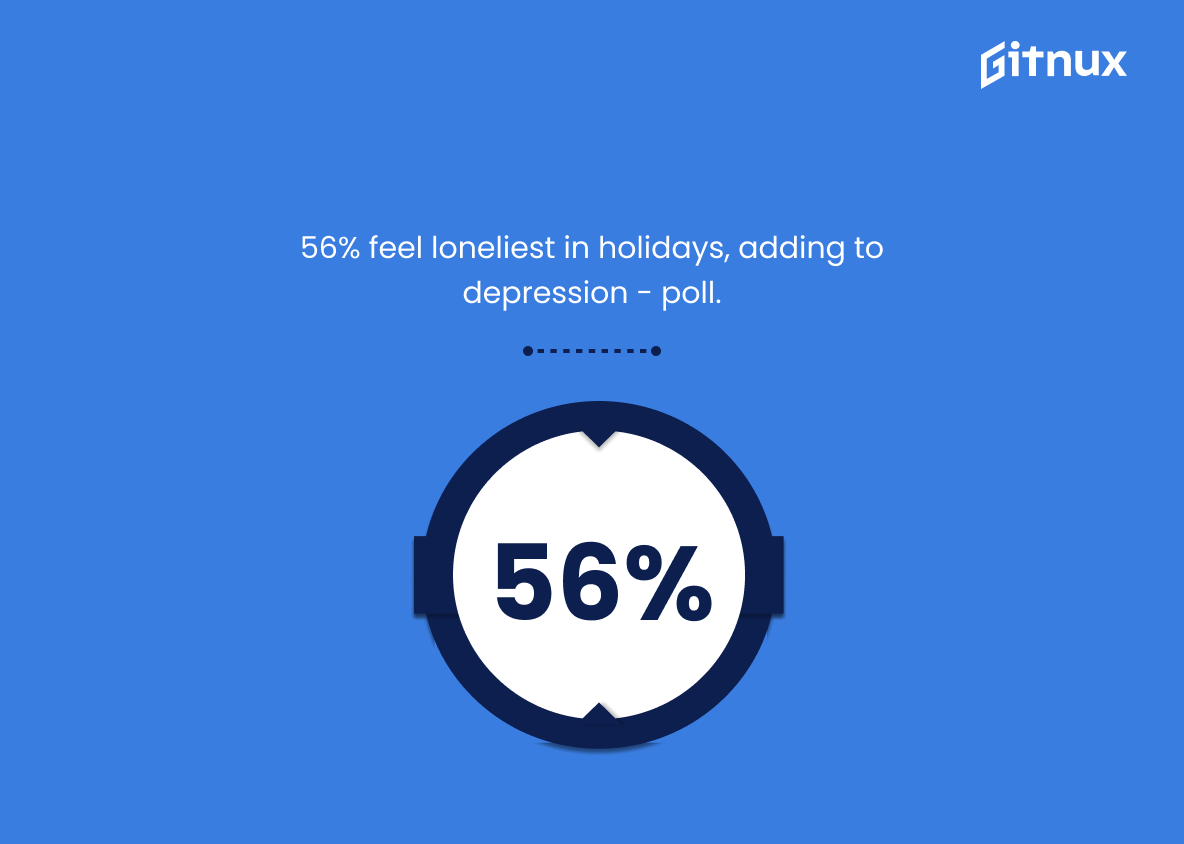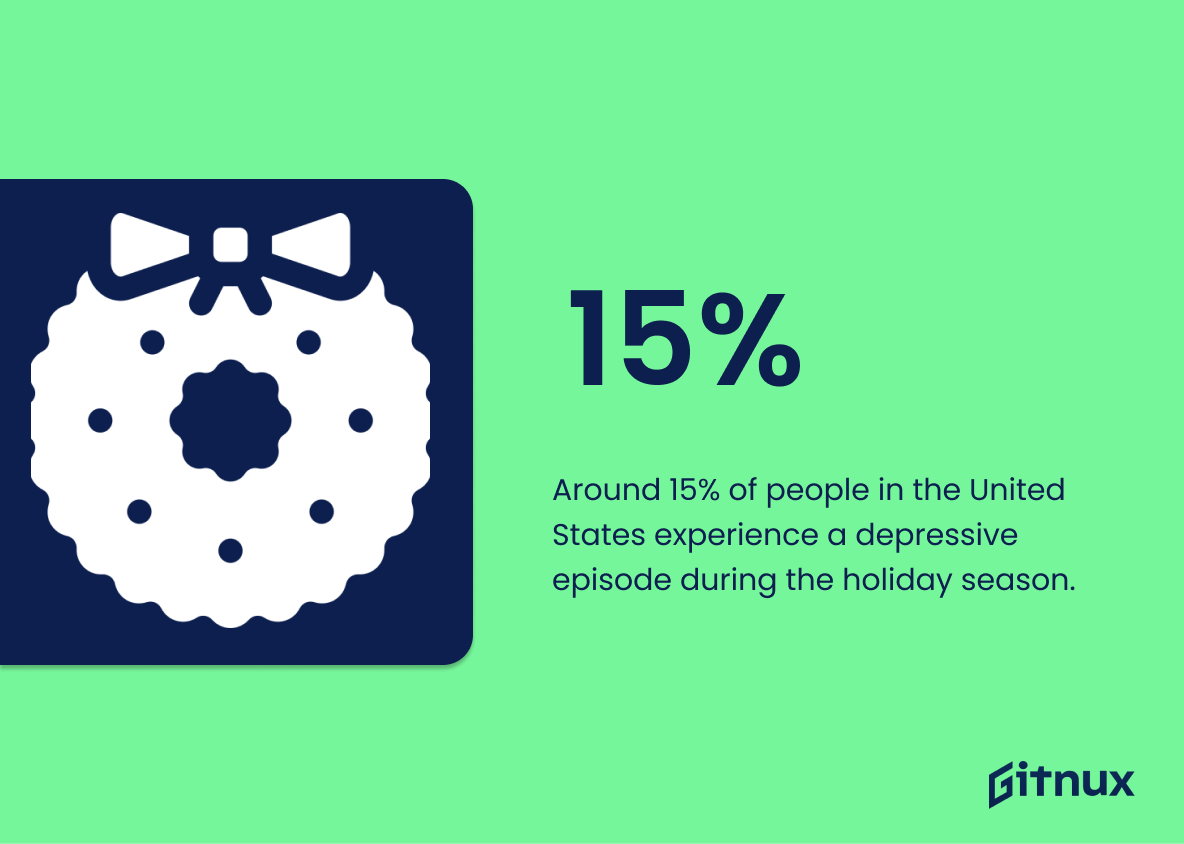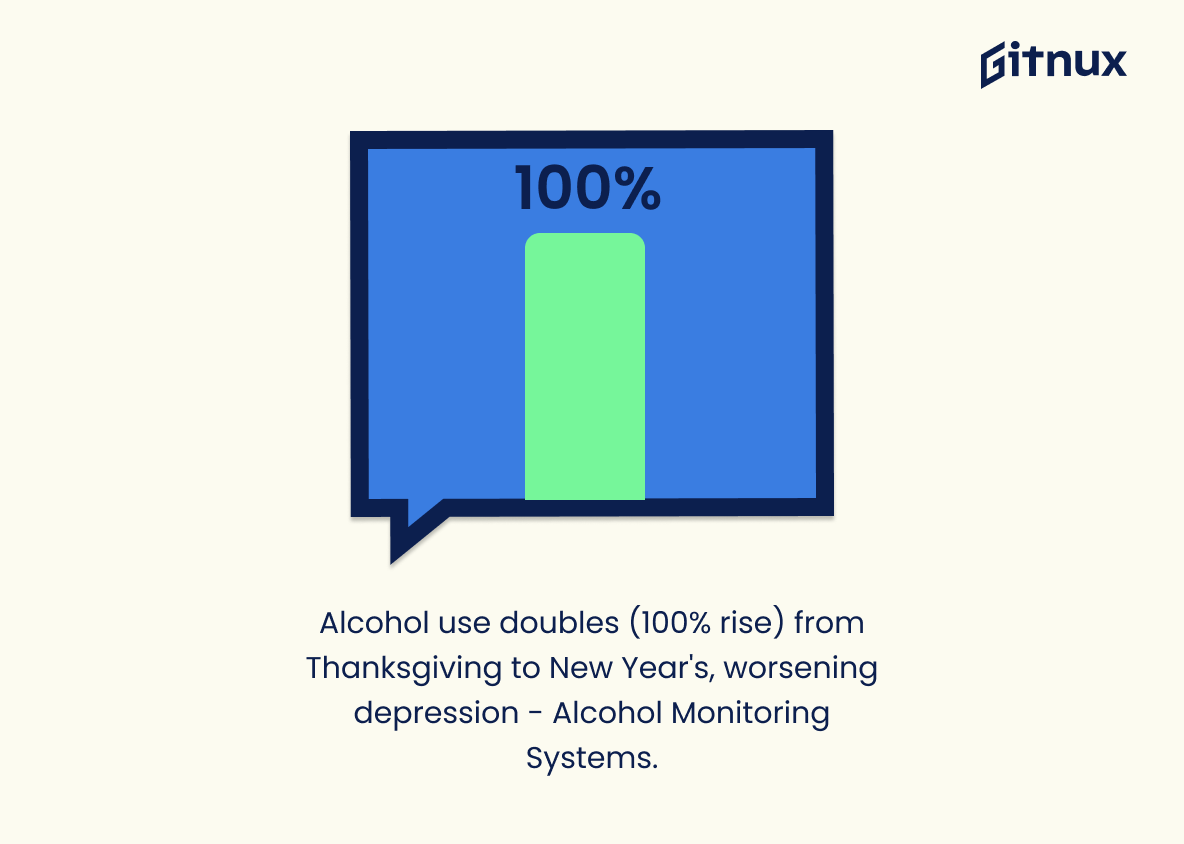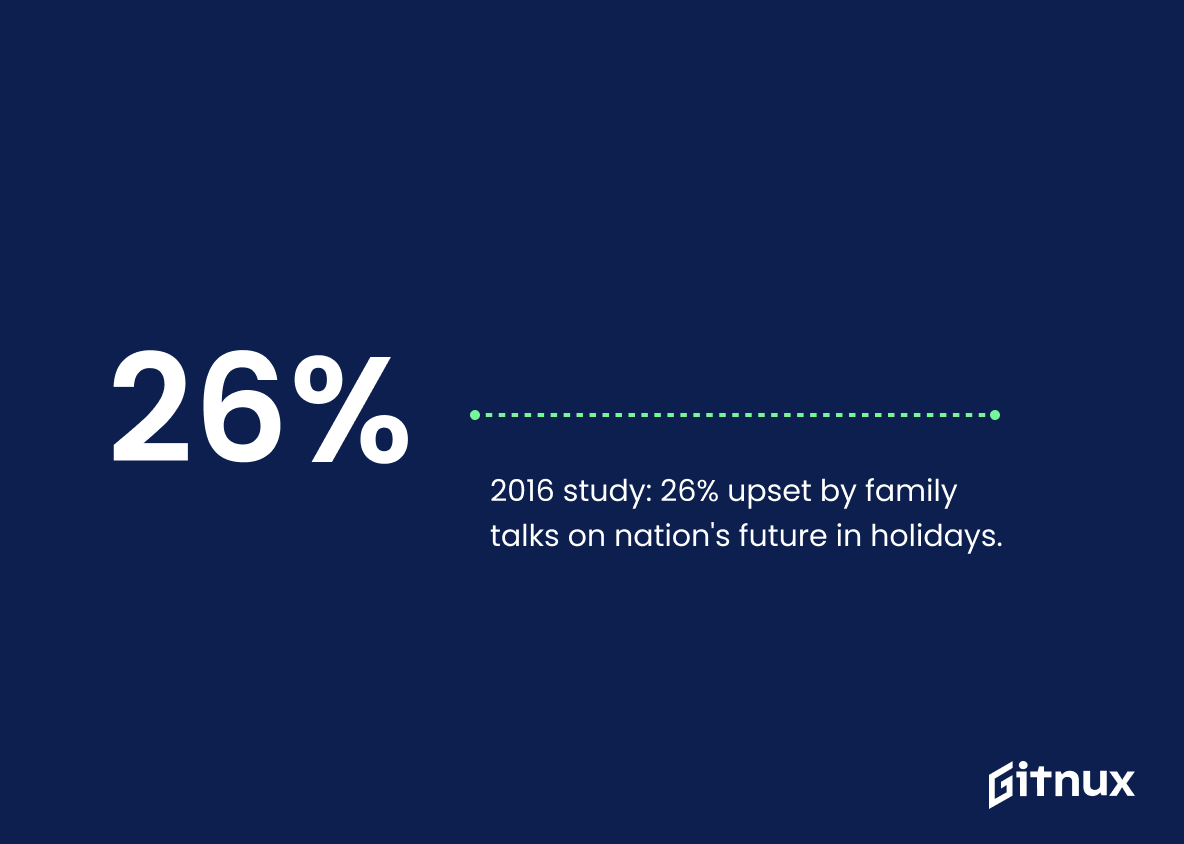The soft glow of festive lights and joyful carols often paint a picture of universal happiness during the holiday season. Yet, this is often not the case for everyone. Widespread yet often hidden, holiday depression rates escalate during this time of year, affecting a much larger portion of the population than many realize. This blog post uncovers the stark reality of holiday depression statistics, aiming to shed light on this critical issue that contrasts sharply with the assumed merriment of the season. Understanding the depth and scope of this problem allows us to create more inclusive, empathetic holidays and ensure that support and resources are provided to those who need it the most.
The Latest Holiday Depression Statistics Unveiled
Approximately 64% of people report that they are affected by the ‘Holiday blues,’ which can include feelings of depression.
Depicting the stark reality of holiday depression, the statistic revealing that about 64% of individuals confess to being affected by the ‘Holiday blues’ brings home the silent epidemic of sadness frequently masked by the twinkling lights and cheerful carols. It uncovers a narrative often untold amidst festive celebrations, providing a broader spectrum to actually who we consider jolly during festivities. In a blog post detailing Holiday Depression Statistics, this percentage corroborates the pervasiveness of this issue, allowing readers to comprehend the scale and significance of holiday-induced despair and hence, invoking a deeper concern and understanding about the same.
According to a 2015 Healthline survey, 62% of respondents described their stress levels as ‘very’ or ‘somewhat’ elevated during the holiday season.
Integrating the enlightening piece of data from the 2015 Healthline survey, which underlines that 62% of respondents experienced ‘very’ or ‘somewhat’ elevated stress levels during the holiday season, brings an alarming dimension into our discussion on Holiday Depression Statistics, adding substantial weight. This numeric revelation paints a vivid picture of the widespread stress which often escalates to depression during this supposedly joyous period of festivities and renewal, highlighting the pressing need for proactive behavioral and psychological strategies to counteract this growing public health issue. This statistic, consequently, brings contemplative gravitas to the festive season’s often overlooked dark side, puncturing the balloon of festive illusion and encouraging readers to understand, identify, and address the hidden mental challenges many face during such periods.
The American Psychological Association found that 38% of people reported their stress levels increased during the holiday season.
Diving into the depths of holiday depression statistics, one might stumble upon a noteworthy revelation made by the American Psychological Association. They discovered an intriguing pattern where 38% of people witnessed a surge in their stress levels during the holiday season. The surprising percentage catches you off guard, doesn’t it? This data unearths a stark reality of the paradoxical holiday season— a time expected to diffuse happiness and harmony is also a period arousing heightened stress for many. With stress being a significant trigger for depressive episodes, this figure serves as a critical culprit in unravelling the mystery around the surge in holiday depression. Hence, while joy and cheer might be the holiday’s hallmark for some, it’s apparent that a significant chunk succumbs to the stress crunch, presumably fuelling the incidence of holiday depression. So, the next time holiday cheer rings in, remember, it might not be the same tune for everyone around you.
45% of Americans would prefer to skip Christmas altogether due to financial pressure, which can contribute to holiday depression.
Unwrapping this important statistic, we journey into the lives of almost half the American population who would rather bypass Christmas entirely, largely due to financial strain. This unexpected revelation presents a poignant picture of the emotional toll concealed within the holiday season. This statistic is tantamount to throwing a spotlight on the often overlooked aspect of holiday depression, defying the conventional imagery of merry and bright celebrations. It emphasizes that for a substantial percentage of the population, the incessant pressure to partake in an economically taxing holiday can spawn unease and contribute significantly to their mental health issues. It’s a crucial piece of the puzzle in understanding the broader narrative of holiday depression, effectively transforming the way we perceive the festive season’s impacts, and underscores the importance of a more mindful, inclusive approach to holiday festivities.
In a Greenberg Quinlan Rosner Research, 68 percent of respondents felt financially strained during the holidays, increasing stress and depression.
The holiday season, often depicted as a time of joy and connection, has another face as captured in the Greenberg Quinlan Rosner Research. A significant portion of respondents, 68% to be precise, found this period to be financially strenuous, uncovering an underbelly of stress and depression. The ubiquity of holiday cheer can underscore the discontent for those grappling with economic insecurity, making the festive period a paradoxical blend of joy and emotional burden.
Such a figure is not insignificant, it’s a silent cry that echoes through the glimmering decorations and cheerful carols, finding resonance with many hidden faces in the crowd. Its inclusion in a blog post about holiday depression statistics lifts the veil on the often overlooked reality of holiday-induced financial strain, positioning it as a key factor contributing to increased stress and depression. This statistic adds a tangible dimension to the discussion, enabling a better understanding and more effective dialogue around managing mental health during the festive season. This punch of realism also prompts us to consider the socio-economic disparities that further exacerbate holiday depression, paving the way for more inclusive mental health awareness initiatives.
69% of people are stressed by feeling a lack of time, 69% are stressed by perceiving a lack of money, and 51% are stressed out about the pressure to give or get gifts according to American Psychological Association.
Time constraints, money woes, and societal pressure form the unholy trifecta of holiday stressors, as corroborated by the statistic shared by the American Psychological Association. A staggering 69% people echo being enveloped by a stress cloud due to lack of time and an equal percentage find themselves at the mercy of monetary inadequacy. Meanwhile, more than half of the individuals, approximately 51%, grapple with the anxiety to exchange gifts. These numbers, an empiric mirror to widespread Holiday depression, underscore the imperativeness of addressing mental health during these seemingly festive times. What looks like joyous merriment on the surface, actually hides undercurrents of high stress and anxiety, which if ignored, can toll heavily on our wellbeing. Drawing on these figures can pave the way for a much-needed discourse on Emotional well-being amidst Holiday Cheer.
the Cleveland Clinic mentions that Approximately 1 in 10 Americans experience depressive symptoms, but these numbers can be as high as 1 in 8 during the holidays.
Peeling back the layers of this striking statistic reveals a stark reality about the prevalence of holiday depression among Americans. Paradoxically, a period recognized for happiness, love and togetherness takes a heavy emotional toll on a significant proportion of the population. Imagine walking through a bustling crowd of ten people: chances are, one of them is grappling with depression; yet, this rate intensifies during the holiday period and suddenly that figure upswings to potentially one in eight. That escalation is reflective of more than just numbers; it’s a cry for deeper understanding, comprehensive mental health promotion, destigmatizing conversations, and compassionate assistance. This integral statistic, presented by the acclaimed Cleveland Clinic, serves as an eye-opening foundation for this blog post, thus engaging readers with the widespread seriousness of holiday depression, and acting as a springboard for further discussion.
Up to 20% experience some form of Seasonal Affective Disorder, which can increase during the holiday season, according to the American Family Physician.
Winding our path through the world of Holiday Depression Statistics, we tie our threads of understanding to the stark revelation from the American Family Physician: indicating that up to 20% of individuals experience some form of Seasonal Affective Disorder. Alas, these numbers are not static, they surge as holiday lights brighten the frosted windows and joyous carols fill the air. This inflating conundrum reveals itself as a vital keystone, composing the large-scale panorama of holiday depression. By acknowledging this, we crack open the door to greater sensitivity, compassionate interactions, and targeted interventions during these times of festivities, thus illuminating the importance of understanding and addressing Holiday Depression.
Holiday blues affect women, the young, and those with a history of mental health issues the most significantly, according to Mayo Clinic.
Digesting this piece of data uncovers a stark reality: certain vulnerable groups such as women, young individuals, and those with a prior history of mental health issues are far more susceptible to experiencing holiday blues, as per the Mayo Clinic’s findings. The essence of this statistic is its ability to spotlight these high-risk categories amidst a sea of holiday revelers. It paints a contrasting picture to the typical festive cheer, offering a sobering reminder of the silent suffering that often goes unnoticed. This statistic is a critical thread in the tapestry of our blog post on Holiday Depression Statistics, amplifying an often-overlooked, yet necessary conversation around mental well-being during supposedly joyous times.
56% of respondents in a poll reported experiencing the most loneliness during the holiday season, contributing to holiday depression.
Reflecting on this intriguing number, a stunning 56% of poll respondents note the holiday season as their pinnacle of loneliness, shedding light on a key factor fuelling holiday depression. This percentage serves as a vivid reminder of the silent battles many individuals wrestle with amidst festive occasions, against the picture-perfect delusions portrayed by holiday celebrations. In the landscape of holiday depression statistics, this figure whispers a poignant tale, gently urging us to be conscious of the concealed pain under the sparkle of holiday decorations and merry gatherings. Therefore, it underlines the urgency and importance of addressing this issue with sensitivity, aiming to make the season of joy genuinely happy for everyone.
Around 15% of people in the United States experience a depressive episode during the holiday season.
Delving into the statistic that reveals approximately 15% of people in the U.S. encounter a depressive episode during the holiday season, it provides a substantial insight that punctures the common perception of holidays being purely a season of joy, cheer, and celebration. In the granite foundation of a blog titled “Holiday Depression Statistics”, this finding underscores the stark reality that a significant portion of the population grapples with the paradox of the ‘most wonderful time of the year’.
This percentage serves as a necessary wake-up call, drawing our attention to the emotional turbulence lurking beneath the glittering facade of holiday festivities. It implores us to explore the factors triggering this holiday depression and to seek effective strategies to mitigate this issue. Thus, the statistic takes on a pivotal role underpinning the entire discourse in the blog post. It grants us a tangible starting point to delve more deeply into Holiday Depression – understanding its causes, effects, and potential solutions, all aimed to dissipate the shadow this mental health issue casts over many during the holiday season.
Alcohol consumption, which can exacerbate depression symptoms, increases 100% between Thanksgiving and New Year’s according to a data survey by Alcohol Monitoring Systems.
The insidious intertwining of alcohol consumption and depression symptoms becomes glaringly prominent when considering the data survey from Alcohol Monitoring Systems. An alarming surge, specifically a 100% increase in libation indulgence marks the festive period between Thanksgiving and New Year’s as a vulnerable time for those grappling with depression. In the realm of holiday depression statistics, this number underscores a crucial pattern. It signals a need for increased vigilance, awareness and interventions during these holidays, a season that while merry for some, may steep others in deepening shades of blue. Therefore, understanding this characteristic escalation in alcohol use amongst the depressed population during this season, strengthens our ability to devise timely and effective support systems.
In a 2016 study, more than a quarter (26%) stated that they had been upset by family discussions about the nation’s future during the holiday season.
Reflecting on the statistic, ‘In a 2016 study, more than a quarter (26%) stated that they had been upset by family discussions about the nation’s future during the holiday season.’, it paints a vivid picture that threads itself into the intricate tapestry of Holiday Depression Statistics. These numbers are not mere percentages, they are a somber depiction of the complex emotional landscape many people navigate during the holiday season. They show us that holiday pressures aren’t always about gifting or finances, but also about the social interactions and conversations that may trigger unease, anxiety, and distress. This timely snapshot of public sentiment shines a light on the unexpected sources of the holiday blues, reminding us not to underestimate the emotional toll that socio-political discussions can bring about in a supposedly joyous time. It underscores the deeper understanding that holiday depression might be not simply a private struggle, but one that mirrors larger societal concerns and anxieties.
50% of participants surveyed by the National Alliance on Mental Illness in the U.S. reported that their mental health gets worse during the holiday season.
Delving into such a statistic offers great insight into the heart of the issue, painting a stark picture of the significant impact of the holiday season on mental health for many individuals. In the context of a blog post about Holiday Depression Statistics, this statement serves as a reflective mirror, allowing readers to witness how the emblem of joy and togetherness can paradoxically become a magnifier of emotional unrest and struggle for a considerable proportion of the population. Furthermore, it aids in dismantling the misconception that holidays solely bring about cheer and highlights the importance of understanding and addressing holiday depression.
Conclusion
Holiday depression is a serious concern affecting a significant portion of the population, as the statistics discussed above make abundantly clear. Despite this, being aware of it represents the first step towards addressing this issue effectively. It’s crucial for everyone to be aware of these stark realities so they can make an effort to reach out to anyone who might be struggling. Additionally, understanding these statistics can encourage those personally facing holiday depression to seek help, knowing they are not alone. Let’s promote more open conversations about mental health, breaking down societal stigmas, and reinforcing a culture of empathy, support, and understanding during the holiday season and beyond.
References
0. – https://www.www.mentalhealthfirstaid.org
1. – https://www.www.healthline.com
2. – https://www.www.nami.org
3. – https://www.www.mayoclinic.org
4. – https://www.www.usatoday.com
5. – https://www.www.apa.org
6. – https://www.www.mentalhealthamerica.net
7. – https://www.www.aafp.org
8. – https://www.www.ncbi.nlm.nih.gov
9. – https://www.my.clevelandclinic.org
10. – https://www.search.proquest.com
11. – https://www.www.npr.org
